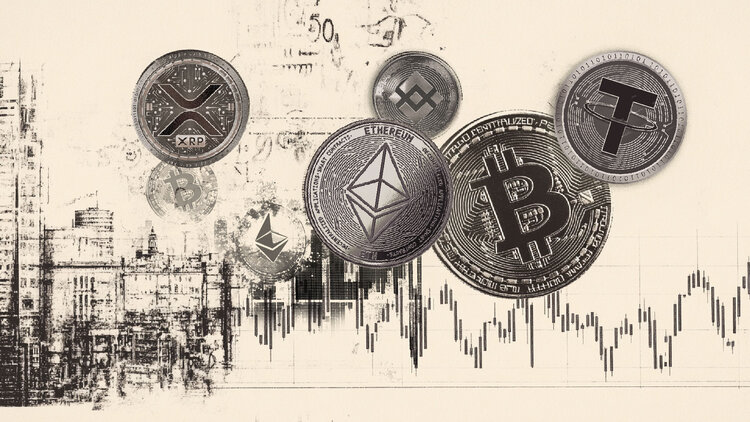The rise of Cryptocurrencies, and in particular Bitcoin (BTC), has turned the world of investing on its head.
Once the preserve of daring investors, digital currencies are now finding their way into long-term strategies, particularly those linked to retirement.
The question is, can you really add Bitcoin or other Cryptos to your Individual Retirement Account (IRA), the tax-advantaged retirement accounts so common in the USA?
IRAs, pillars of American retirement savings
Individual Retirement Accounts (IRAs) play a central role in the American savings system, alongside Social Security. They enable individuals to prepare for their future within a favorable tax framework.
- In a Traditional IRA, contributions are tax-deductible and investment growth is deferred until withdrawal.
- In a Roth IRA, the saver pays taxes up front, but can withdraw his or her earnings completely tax-free at retirement.
Historically, these accounts hosted mostly conventional assets: Stocks, Bonds, Index Funds. But with the emergence of Cryptocurrencies, a new generation of investors is asking why not include Bitcoin in their retirement planning strategy?
Crypto IRAs: A booming reality
Since 2014, the IRS (Internal Revenue Service) has considered Cryptocurrencies to be a form of taxable “property”, on a par with stocks or real estate.
This opens the door to their integration into retirement accounts. In practical terms, it’s now possible to create a Crypto IRA, usually a “self-directed” version, allowing you to hold and trade Cryptos such as Bitcoin, Ethereum or XRP.
Several specialized platforms, such as BitcoinIRA, iTrustCapital and Fidelity Digital Assets, offer this type of product. Investors then choose whether they prefer :
- A Traditional Crypto IRA, with deferred taxation.
- A Roth Crypto IRA, which offers the prospect of fully tax-free withdrawals.
Contribution and withdrawal rules remain identical to those for IRAs, with annual limits set by the IRS ($7,000 in 2025, or $8,000 after age 50), and penalties for early withdrawal before age 59 and a half.
Advantages and promises of a Crypto IRA
The appeal of Cryptocurrencies in a retirement account stems from several arguments:
- Strong growth potential: Despite its volatility, Bitcoin has outperformed many traditional assets over the long term.
- Decisive tax advantages: Outside an IRA, every Cryptocurrency transaction attracts capital gains tax. In an IRA, these gains are either deferred (Traditional) or totally exempt (Roth).
- Diversification: Incorporating a fraction of Cryptocurrencies can offer low correlation with Equity or Bond markets, reinforcing portfolio robustness.
Some investors also see Bitcoin as a form of “digital Gold”, likely to act as a hedge against inflation or expansionary monetary policies.
Real risks to consider
Investing in Cryptocurrencies to prepare for retirement is not without its risks.
- Extreme volatility: Bitcoin has experienced falls of over 70% in a single year. Such instability can jeopardize an over-exposed retirement strategy.
- High fees: Crypto IRAs are often more expensive than Traditional IRAs, due to custody, transaction and security fees.
- Regulatory risk: The legal framework for Cryptocurrencies remains uncertain. Unfavorable changes in tax or prudential regulations could have a major impact on these accounts.
- Lack of guarantees: Unlike bank deposits or securities, Cryptocurrencies held in an IRA benefit from no federal insurance.
Crypto and retirement: For which investor profile?
Experts agree that Cryptos can find their place in a retirement planning strategy, but only on the margins.
For young investors with a long time horizon before retirement, devoting a small fraction of their portfolio to Bitcoin can represent a potentially rewarding gamble.
For investors closer to retirement age, on the other hand, the risk may prove excessive.
In practice, financial advisors often recommend limiting exposure to Cryptocurrency to 5% or less of the overall retirement portfolio, to capture some of the potential without compromising the security of accumulated savings.
An innovative option, but one to be handled with care
Yes, it is now possible to add Cryptocurrencies, notably Bitcoin, to one’s Individual Retirement Account (IRA). This option is increasingly appealing to investors seeking to combine the yield prospects of digital assets with the tax advantages of retirement accounts.
However, Cryptocurrencies remain highly speculative. Integrating them into a savings strategy must be done with discernment, as part of a diversified allocation tailored to the investment horizon.
Social Security, for its part, remains the indispensable foundation of the American retirement system, but a Crypto IRA can represent a bold and risky addition for those who believe in the future of digital assets.
IRAs FAQs
An IRA (Individual Retirement Account) allows you to make tax-deferred investments to save money and provide financial security when you retire. There are different types of IRAs, the most common being a traditional one – in which contributions may be tax-deductible – and a Roth IRA, a personal savings plan where contributions are not tax deductible but earnings and withdrawals may be tax-free. When you add money to your IRA, this can be invested in a wide range of financial products, usually a portfolio based on bonds, stocks and mutual funds.
Yes. For conventional IRAs, one can get exposure to Gold by investing in Gold-focused securities, such as ETFs. In the case of a self-directed IRA (SDIRA), which offers the possibility of investing in alternative assets, Gold and precious metals are available. In such cases, the investment is based on holding physical Gold (or any other precious metals like Silver, Platinum or Palladium). When investing in a Gold IRA, you don’t keep the physical metal, but a custodian entity does.
They are different products, both designed to help individuals save for retirement. The 401(k) is sponsored by employers and is built by deducting contributions directly from the paycheck, which are usually matched by the employer. Decisions on investment are very limited. An IRA, meanwhile, is a plan that an individual opens with a financial institution and offers more investment options. Both systems are quite similar in terms of taxation as contributions are either made pre-tax or are tax-deductible. You don’t have to choose one or the other: even if you have a 401(k) plan, you may be able to put extra money aside in an IRA
The US Internal Revenue Service (IRS) doesn’t specifically give any requirements regarding minimum contributions to start and deposit in an IRA (it does, however, for conversions and withdrawals). Still, some brokers may require a minimum amount depending on the funds you would like to invest in. On the other hand, the IRS establishes a maximum amount that an individual can contribute to their IRA each year.
Investment volatility is an inherent risk to any portfolio, including an IRA. The more traditional IRAs – based on a portfolio made of stocks, bonds, or mutual funds – is subject to market fluctuations and can lead to potential losses over time. Having said that, IRAs are long-term investments (even over decades), and markets tend to rise beyond short-term corrections. Still, every investor should consider their risk tolerance and choose a portfolio that suits it. Stocks tend to be more volatile than bonds, and assets available in certain self-directed IRAs, such as precious metals or cryptocurrencies, can face extremely high volatility. Diversifying your IRA investments across asset classes, sectors and geographic regions is one way to protect it against market fluctuations that could threaten its health.
Read the full article here



